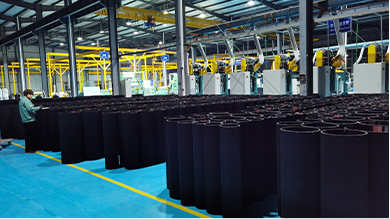- Arabic
- French
- Russian
- Spanish
- Portuguese
- Turkish
- Armenian
- English
- Albanian
- Amharic
- Azerbaijani
- Basque
- Belarusian
- Bengali
- Bosnian
- Bulgarian
- Catalan
- Cebuano
- Corsican
- Croatian
- Czech
- Danish
- Dutch
- Afrikaans
- Esperanto
- Estonian
- Finnish
- Frisian
- Galician
- Georgian
- German
- Greek
- Gujarati
- Haitian Creole
- hausa
- hawaiian
- Hebrew
- Hindi
- Miao
- Hungarian
- Icelandic
- igbo
- Indonesian
- irish
- Italian
- Japanese
- Javanese
- Kannada
- kazakh
- Khmer
- Rwandese
- Korean
- Kurdish
- Kyrgyz
- Lao
- Latin
- Latvian
- Lithuanian
- Luxembourgish
- Macedonian
- Malgashi
- Malay
- Malayalam
- Maltese
- Maori
- Marathi
- Mongolian
- Myanmar
- Nepali
- Norwegian
- Norwegian
- Occitan
- Pashto
- Persian
- Polish
- Punjabi
- Romanian
- Samoan
- Scottish Gaelic
- Serbian
- Sesotho
- Shona
- Sindhi
- Sinhala
- Slovak
- Slovenian
- Somali
- Sundanese
- Swahili
- Swedish
- Tagalog
- Tajik
- Tamil
- Tatar
- Telugu
- Thai
- Turkmen
- Ukrainian
- Urdu
- Uighur
- Uzbek
- Vietnamese
- Welsh
- Bantu
- Yiddish
- Yoruba
- Zulu
Oct . 18, 2024 18:06 Back to list
Timing Belt T10 for PU Application with 20mm Width Ideal for Precision Drives
Understanding PU Timing Belts T10 Profile and 20 mm Width
In various industrial and engineering applications, the importance of timing belts cannot be overstated. Among the types of timing belts available, Polyurethane (PU) timing belts with a T10 profile and a width of 20 mm serve as a popular choice due to their specific mechanical properties and flexibility.
What is a Timing Belt?
A timing belt is a type of mechanical belt that helps in synchronizing the rotation of shafts, especially in machinery involving rotating components. Unlike conventional belts, timing belts have teeth (cogs) that engage directly with pulleys, providing precise timing for the machines' operations. This feature reduces slippage and increases the efficiency of the system.
The Benefits of PU Timing Belts
Polyurethane belts, particularly those with a T10 profile, possess numerous advantages. Firstly, PU timing belts are known for their strength and durability. Polyurethane is resistant to wear and tear, making it an excellent choice for high-load applications. Moreover, PU belts show great resistance to chemicals, oils, and UV light, which extends their lifespan considerably beyond that of rubber-based alternatives.
Secondly, the T10 profile implies that these belts have a 10 mm pitch, meaning that the distance from the center of one tooth to the center of the next tooth is 10 mm. This design facilitates efficient power transmission, especially for applications requiring precise synchronizations. The 20 mm width provides additional surface area that helps in distributing the load evenly, minimizing the chances of belt failure due to excessive stress.
pu timing belt t10 20 mm

Applications of T10 20 mm PU Timing Belts
The versatility of T10 20 mm PU timing belts makes them suitable for a wide range of applications across various industries. They are extensively used in the automotive sector, where precise control of timing is crucial. Other applications include textile machines, packaging machinery, conveyor systems, and robotics. In the manufacturing and industrial environments, these belts play an essential role in maintaining the reliability and performance of equipment and machines.
Installation and Maintenance Considerations
Proper installation and regular maintenance are key to ensuring the longevity and performance of PU timing belts. When installing a T10 20 mm PU timing belt, it’s important to ensure it is properly aligned with the pulleys. Misalignment can lead to increased wear and potential failure. Additionally, regular checks for tension are essential. A timing belt that is too loose may slip, while one that is too tight may cause undue stress on the components, which can lead to premature deterioration.
Conclusion
In summary, PU timing belts with a T10 profile and a width of 20 mm serve as a reliable and efficient choice for various mechanical applications. Their durability, resistance to environmental factors, and precise performance make them indispensable in many sectors. As industries continue to seek out robust and efficient solutions for power transmission, PU timing belts will remain a cornerstone of mechanical engineering. Whether you are involved in automotive engineering, manufacturing, or robotics, understanding the dynamics of these belts will help you make informed decisions that enhance operational efficiency and longevity in your applications.
To maximize the benefits of PU timing belts, always prioritize proper installation, adherence to maintenance schedules, and regular inspections. By doing so, you can ensure that your systems operate smoothly and efficiently, thereby saving both time and costs associated with downtime or equipment failure.
-
Upgrade Power Steering Pump Belt for Smooth, Quiet Operation
NewsAug.27,2025
-
Precision Timing Belt & Chain: Engine Performance & Durability
NewsAug.26,2025
-
Precision Lathe Drive Belts: Durable & Reliable Performance
NewsAug.25,2025
-
84.5 Serpentine Belt: Durable & Precision Fit for Your Engine
NewsAug.24,2025
-
Premium Ribbed Drive Belts for Quiet Power Transmission
NewsAug.23,2025
-
High-Performance Vehicle Timing Belt for Engine Precision
NewsAug.22,2025

